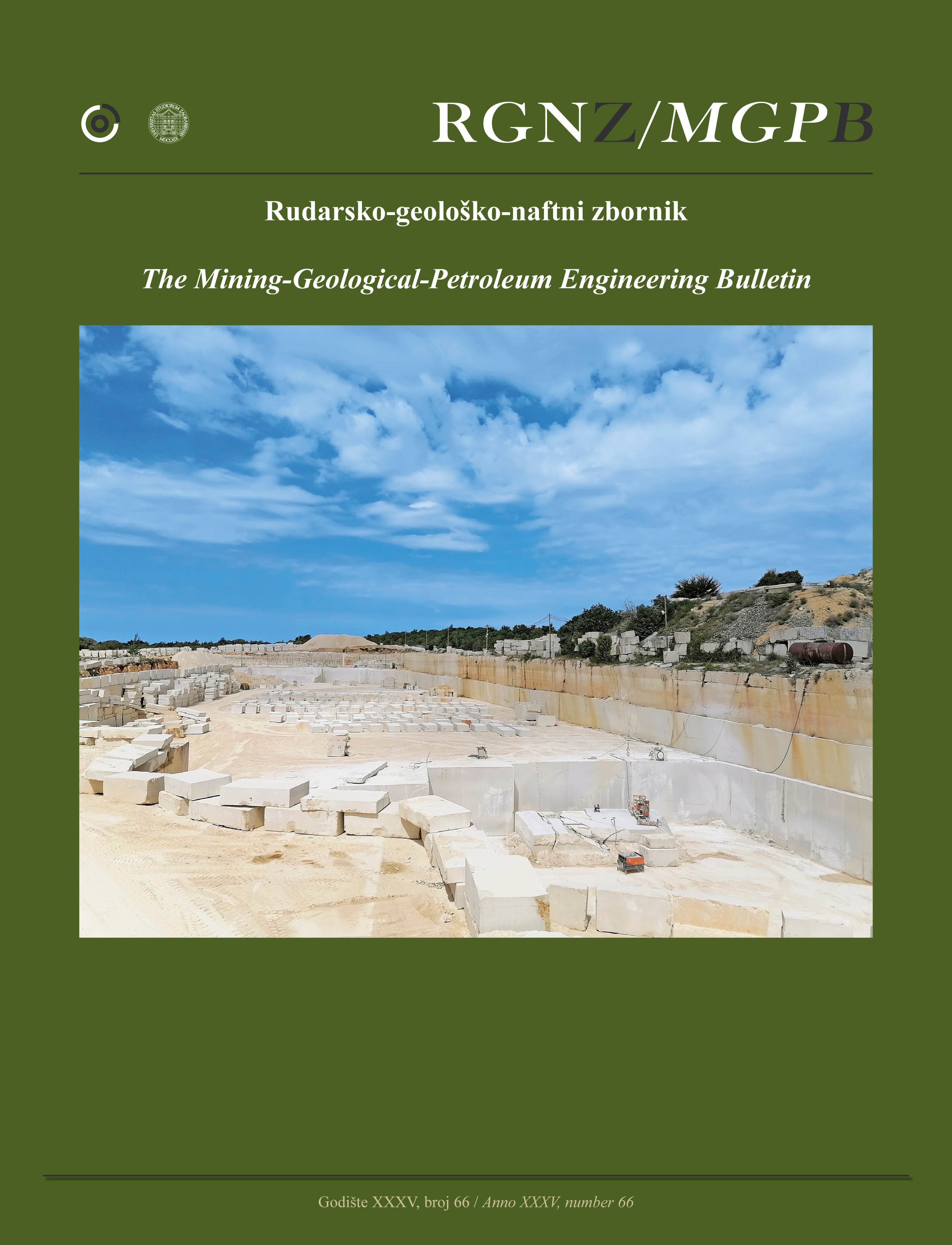Chemical and textural studies of the youngest pyroclastic deposits at Mt. Seminung (South Sumatra, Indonesia): A window for understanding the explosive behavior of a post-caldera volcano
DOI:
https://doi.org/10.17794/rgn.2023.5.6Keywords:
Seminung, magma mingling, magma stratification, overpressure, pheno-bubble, matrix-bubbleAbstract
The youngest tephra deposits of Seminung Volcano in South Sumatra, Indonesia, was studied by addressing the stratigraphy (field data), componentry, petrography, glass and mineral compositions, and textural analysis of vesicles to interpret the magmatic system and eruption dynamics. Based on the componentry and grain size characteristics, the section is divided into three different units: (1) massive block and ash, (2) interbedded ash and lapilli, and (3) massive lapilli. All units include grey pumice (GP), brown pumice (BP), and scoria (SC) as the main juvenile types, while porphyritic lava occurs as the non-juvenile phase (lithics). Noteworthy, minor banded pumice (BaP) can be observed in all units, and accretionary lapilli (AL) is exclusive in the interbedded ash and lapilli unit. The similarity in mineralogy and the linear correlation of all major elements of glass compositions suggest that grey and brown pumice originated from the same shallow, biotite-bearing more silicic magma (64.5-74.9 wt. % ), while scoria originates from the deeper, biotite-free less silicic magma (62.1-69.2 wt. % ). The fact that grey pumice shows higher silica content and pheno-bubble fraction with lower phenocryst content than brown pumice suggests the rough stratification of the more silicic magma reservoir. Furthermore, the more silicic magma was likely intruded by the deeper less silicic magma, as indicated by the bimodal distribution of anorthite (An#) in grey and brown pumices (i.e. the peak of the high anorthite content is similar to that of scoria). Thus, the accumulation of pheno-bubble and magmatic recharge were likely responsible for triggering the eruption. Finally, the fact that juvenile clasts from units 2 and 3 had the highest matrix-vesicle number density (MVND) implies that the eruption intensity reached its peak towards the final eruption stage.
Downloads
Published
How to Cite
Issue
Section
License
Copyright (c) 2023 Indranova Suhendro

This work is licensed under a Creative Commons Attribution 4.0 International License.
Creative Commons-BY
Authors who publish with this journal agree to the following terms:
In agreeing this form, you certify that:
- You read the ethical codex of the RGN zbornik available at journal web.
- You submitted work is your original work, and has not previously been published and does not include any form of plagiarism.
- You own copyright in the submitted work, and are therefore permitted to assign the licence to publish to RGN zbornik.
- Your submitted work contains no violation of any existing copyright or other third party right or any material of an obscene, libellous or otherwise unlawful nature.
- You have obtained permission for and acknowledged the source of any illustrations, diagrams or other material included in the work of which you are not the copyright owner.
- You have taken due care to ensure the accuracy of the work, and that, to the best of your knowledge, there are no false statements made within it.
- All co-authors of this submitted work are aware of, and in agreement with, the terms of this licence and that the submitted manuscript has been approved by these authors.
Publication licence
You retain copyright in your submitted work, according to journal license policy (CC-BY). By signing this form you agree that RGN zbornik may publish it under the publication licence. In summary the licence allows the following:
Anyone is free:
- To copy, distribute, display, and perform the work.
- To make derivative works.
Under the following conditions:
- The original author must always be given credit.
- The work may not be used for commercial purposes.
- If the work is altered, transformed, or built upon, the resulting work may only be distributed under a licence identical to this one.
Exceptions to the licence
In addition to publishing the work printed under the above licence, RGN zbornik will also enable the work to be visible online.
The journal editorial can change the licence rules anytime but it cannot retroactively restrict author(s) rights.


